|
|||
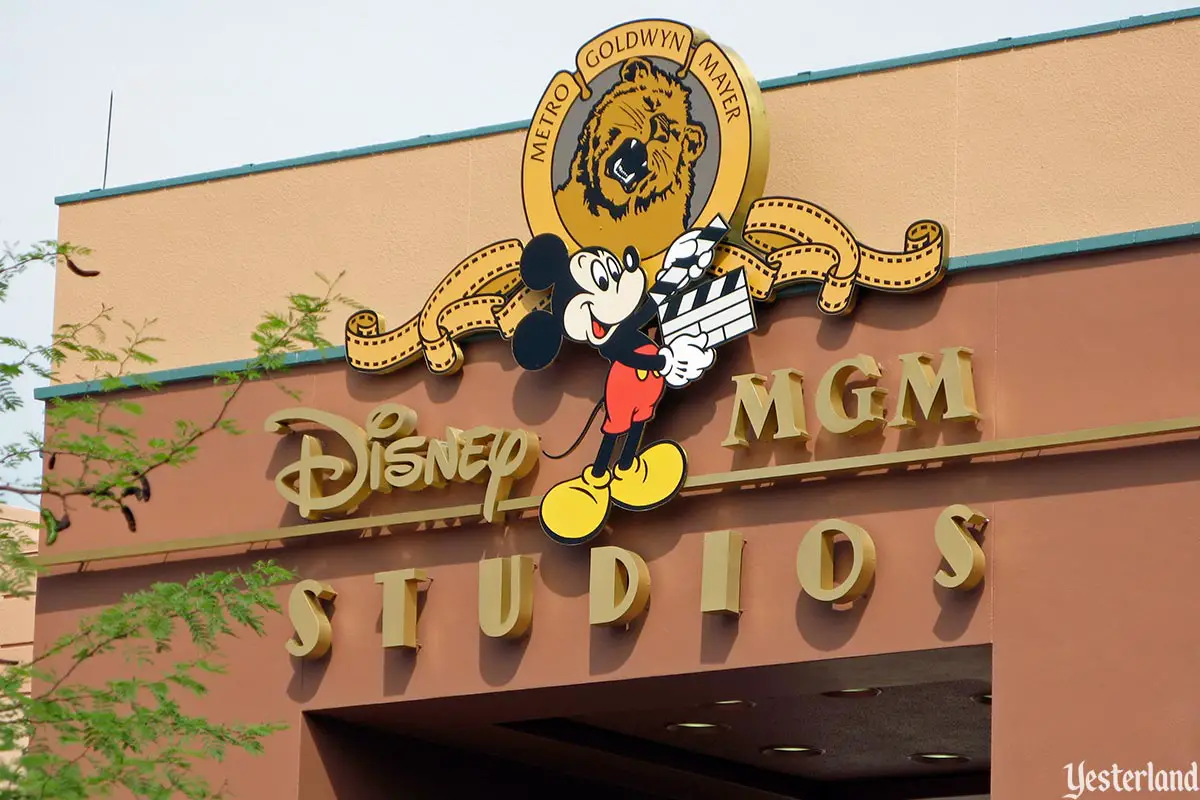
Photo by Werner Weiss, 2007 |
|||
|
Fifteen years ago today—January 6, 2008—was the final operating day of the Disney-MGM Studios Theme Park. The next day, January 7, 2008, it reopened as Disney’s Hollywood Studios. The third major theme park at Walt Disney World had originally opened May 1, 1989. It kept the Disney-MGM name for almost 19 years. There are still people who call it MGM for short.
based on a Yesterland article originally published April 18, 2008 |
|||
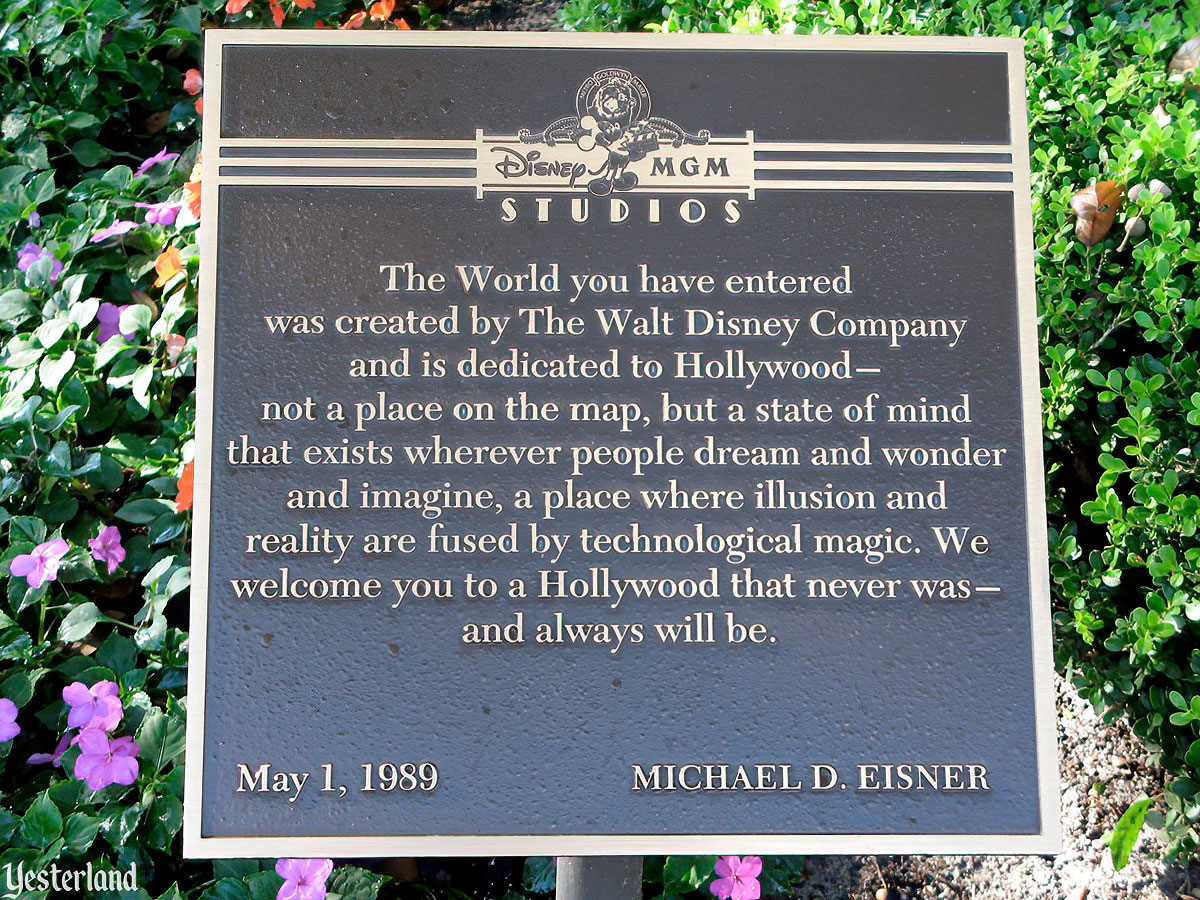
Photo by Werner Weiss, 2007 Disney-MGM Studios dedication plaque |
|||
|
Despite the “MGM” in the park’s name, Metro-Goldwyn-Mayer had no part in designing, owning, or operating Disney-MGM Studios. Metro-Goldwyn-Mayer simply collected a licensing fee from The Walt Disney Company. The owner of MGM, billionaire financier Kirk Kerkorian (1917–2015), wasn’t happy about it. When Kerkorian learned of the deal in 1985, he couldn’t believe that his executives had traded one of the most valuable assets of MGM/UA (as the company was called at the time)—its legendary name—to a competitor for a relatively modest fee. |
|||
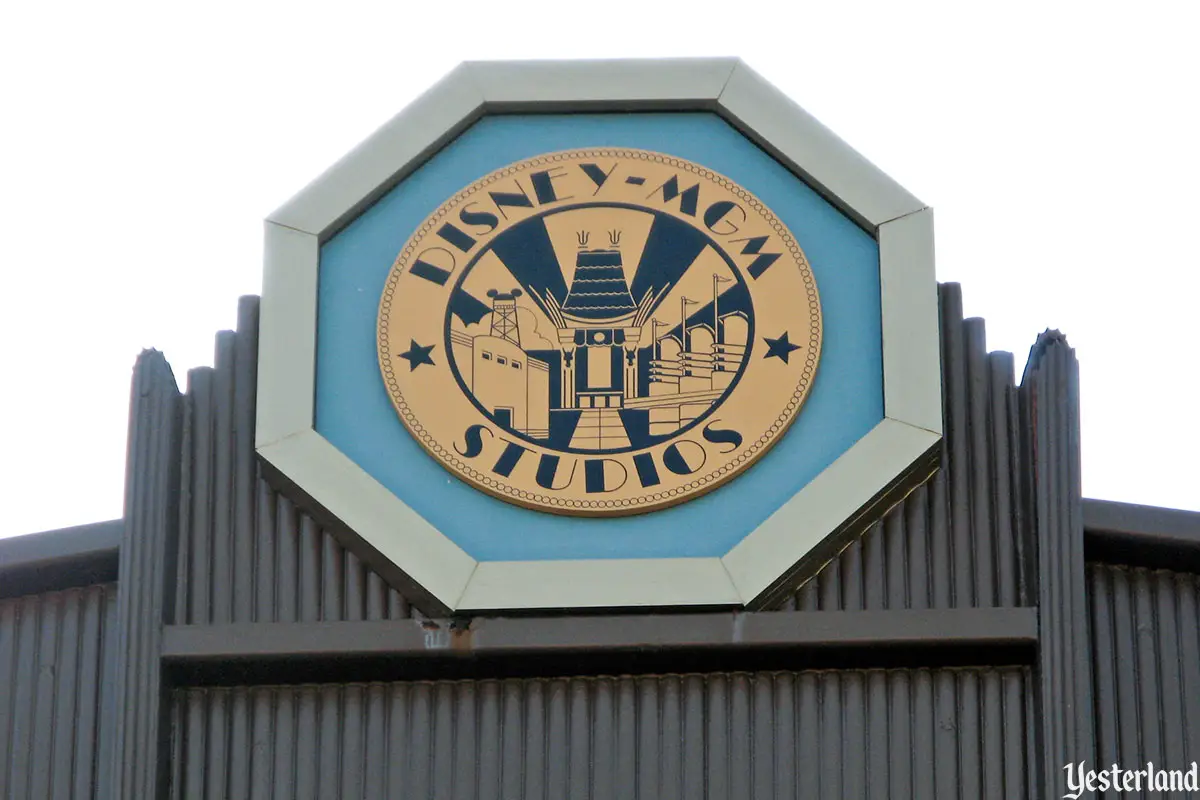
Photo by Werner Weiss, 2007 Another Disney-MGM Studios logo |
|||
|
In his 1998 book Work in Progress, former Disney CEO Michael Eisner explained, “In June 1985, we signed an agreement that gave us most of everything we sought, including perpetual rights to use much of MGM’s library and its logo for a very modest fee. For reasons that remain a mystery Kerkorian was told about the deal only as it was being signed.” Notice that Eisner used the term perpetual rights. |
|||
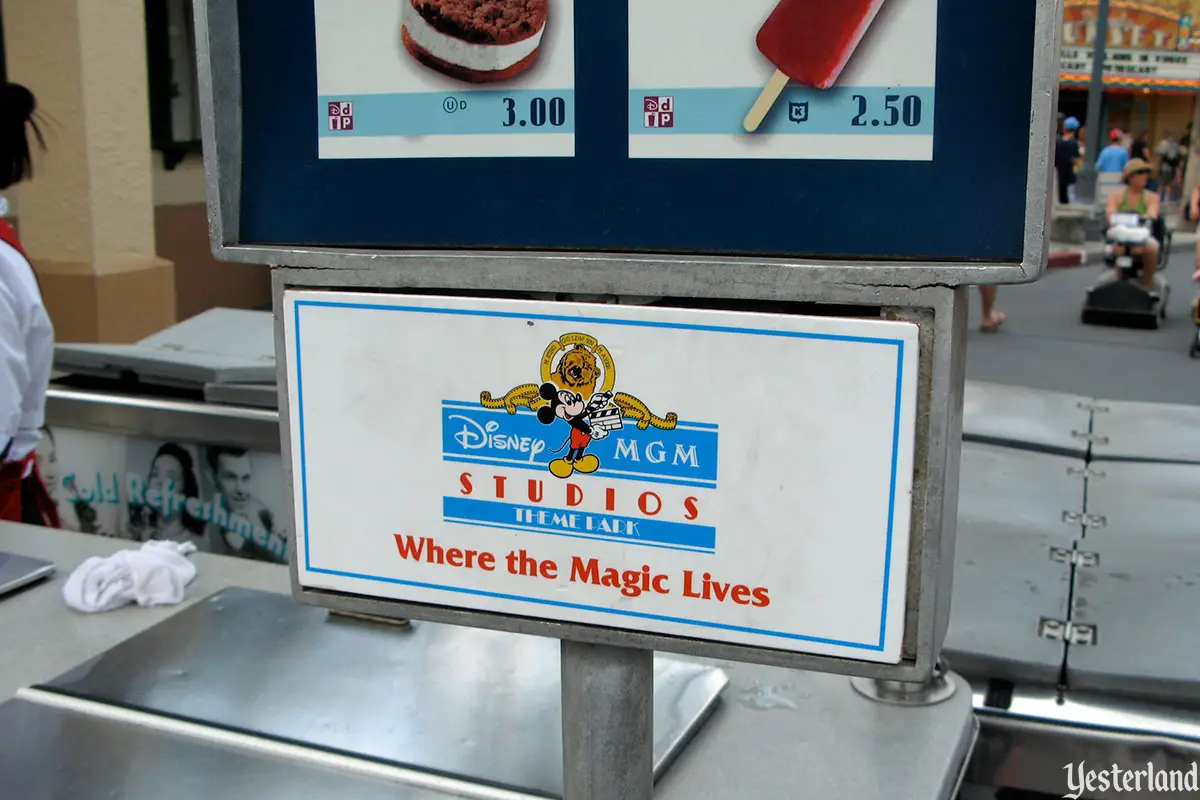
Photo by Werner Weiss, 2007 Ice cream vending cart at Disney-MGM Studios |
|||
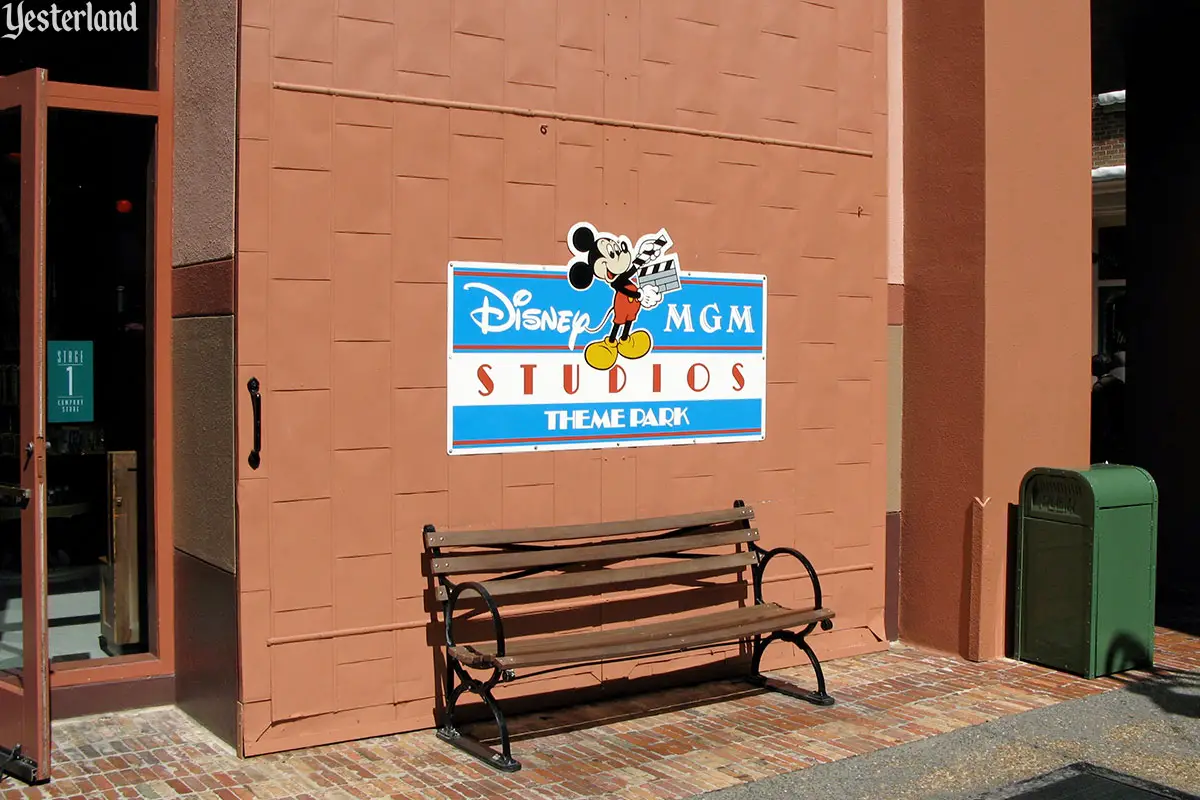
Photo by Werner Weiss, 2007 Stage 1 Company Store |
|||
|
Why did Disney seek the MGM name for its new theme park and studio in Florida? It was because the new park would not just be about Disney movies, it would be about the movies, and no movie studio had a more glorious past than MGM. Not only that, but MGM had a library of many of the greatest movies of all time. The MGM of 1985 was only a shadow of the great MGM of earlier decades. Then again, the Disney of 1985 was also a company whose greatest movie achievements had been in the past. Putting the two most recognized names in entertainment together would be just the marketing angle that the new park needed, right? |
|||
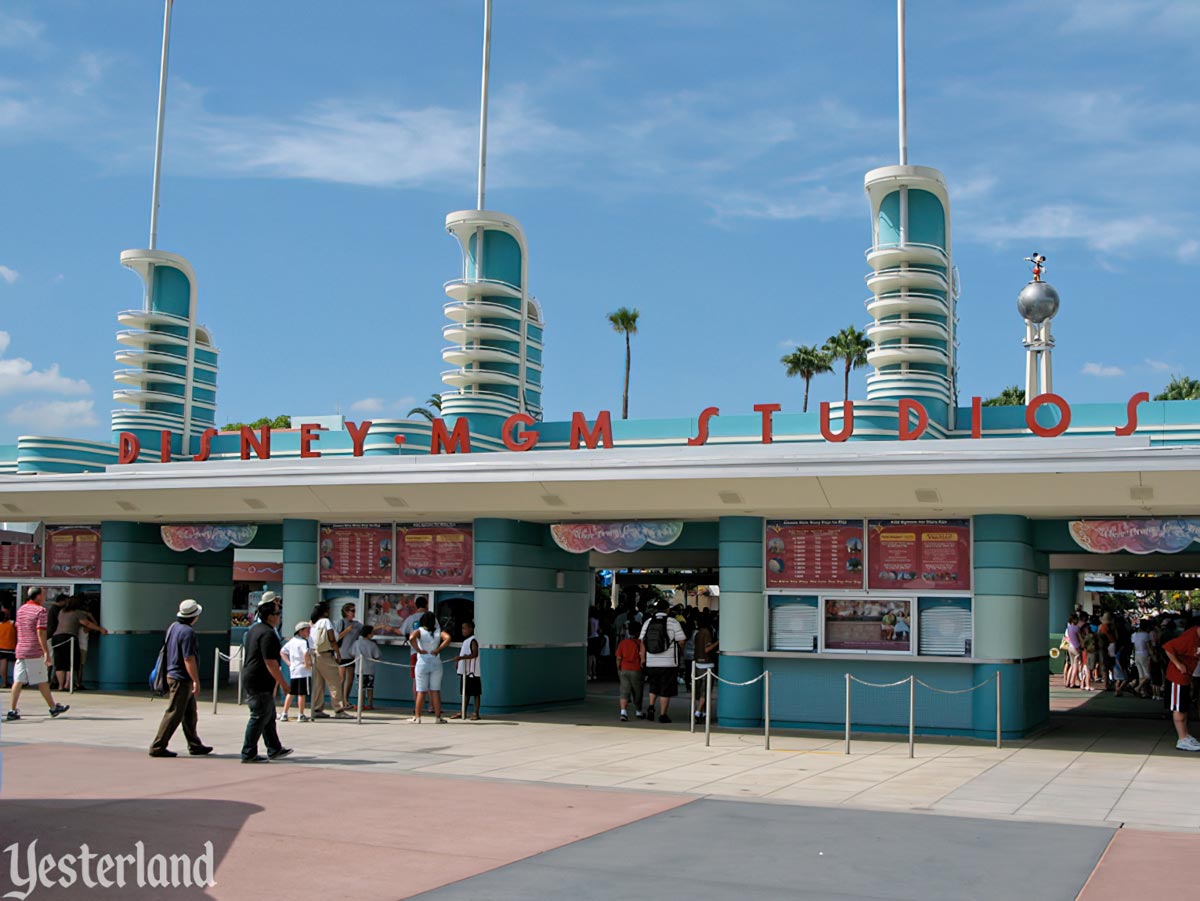
Photo by Werner Weiss, 2007 Disney-MGM Studios entrance |
|||
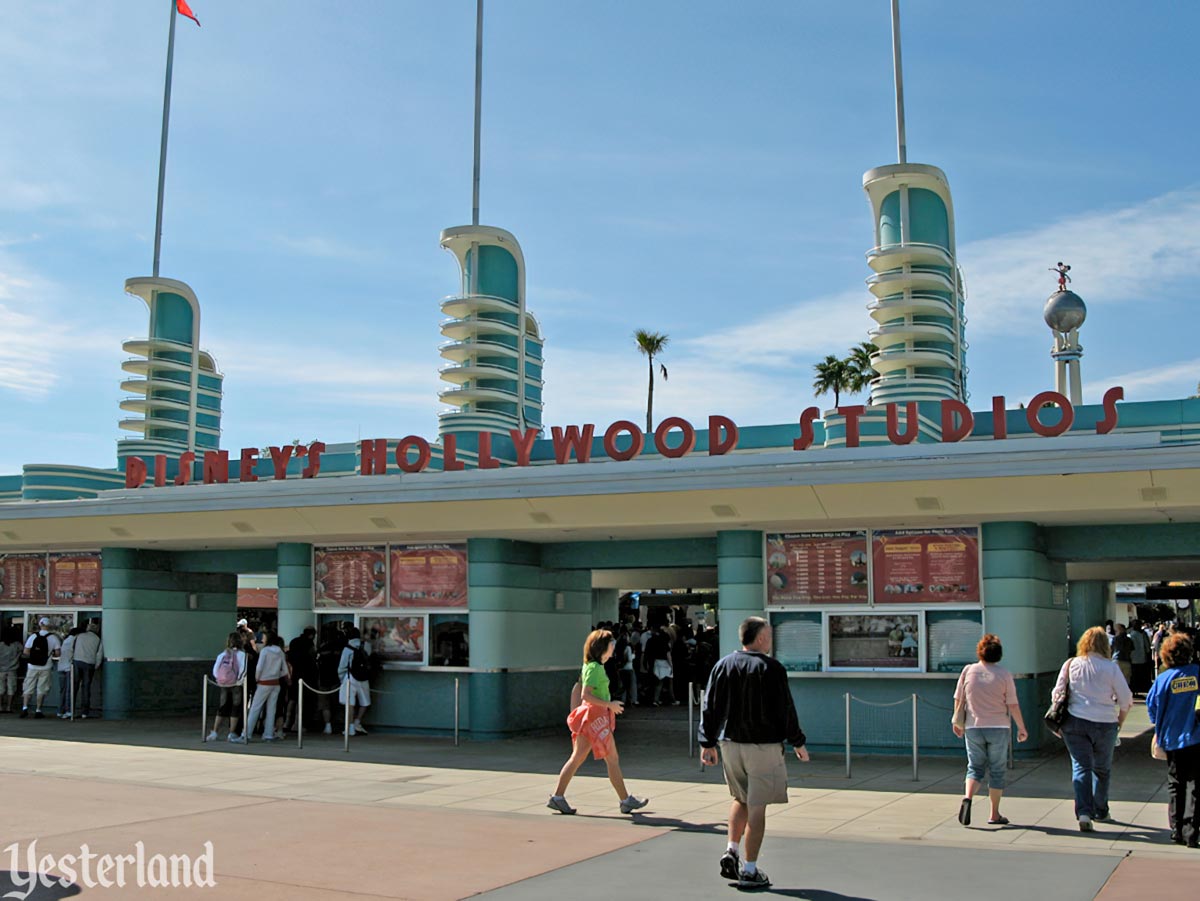
Photo by Werner Weiss, 2008 Disney’s Hollywood Studios entrance |
|||
|
The relationship with MGM/UA was a rocky one. Around the time the park opened, MGM/UA sued Disney over the licensing agreement. In October 1992, a Los Angeles Superior Court judge ruled that Disney could continue to use the Disney-MGM name and logo on productions made at the Florida park. And MGM/UA could license the MGM name to other companies, such as Kerkorian’s hotel-casino company MGM Grand, even for theme parks. An October 26, 1992, article in Variety summed up the issues: Problems occurred when Disney began to use the studios, located within the movie backlot theme park, to create film product, using the Disney-MGM name (several minutes of “Beauty and the Beast” as well as parts of “Honey, I Blew Up the Kid” were shot on the Florida lot). In his ruling, [Judge] Rappe said the language in the 1985 contract was “reasonably susceptible” to the interpretation that Disney could create film product within its working studio theme park. Disney subsequently filed a cross complaint against MGM/UA and MGM Grand over the latter’s plans to build a theme park adjacent to a new $1 billion hotel project in Las Vegas. Disney claimed it held exclusive worldwide rights to the MGM name in connection with theme parks. MGM Grand went ahead with MGM Grand Adventures Theme Park in Las Vegas. The unsuccessful park opened in 1993 and closed in 2000. So, for a number of years there were two MGM-branded theme parks—Disney’s and MGM Grand’s—but they were unrelated. |
|||
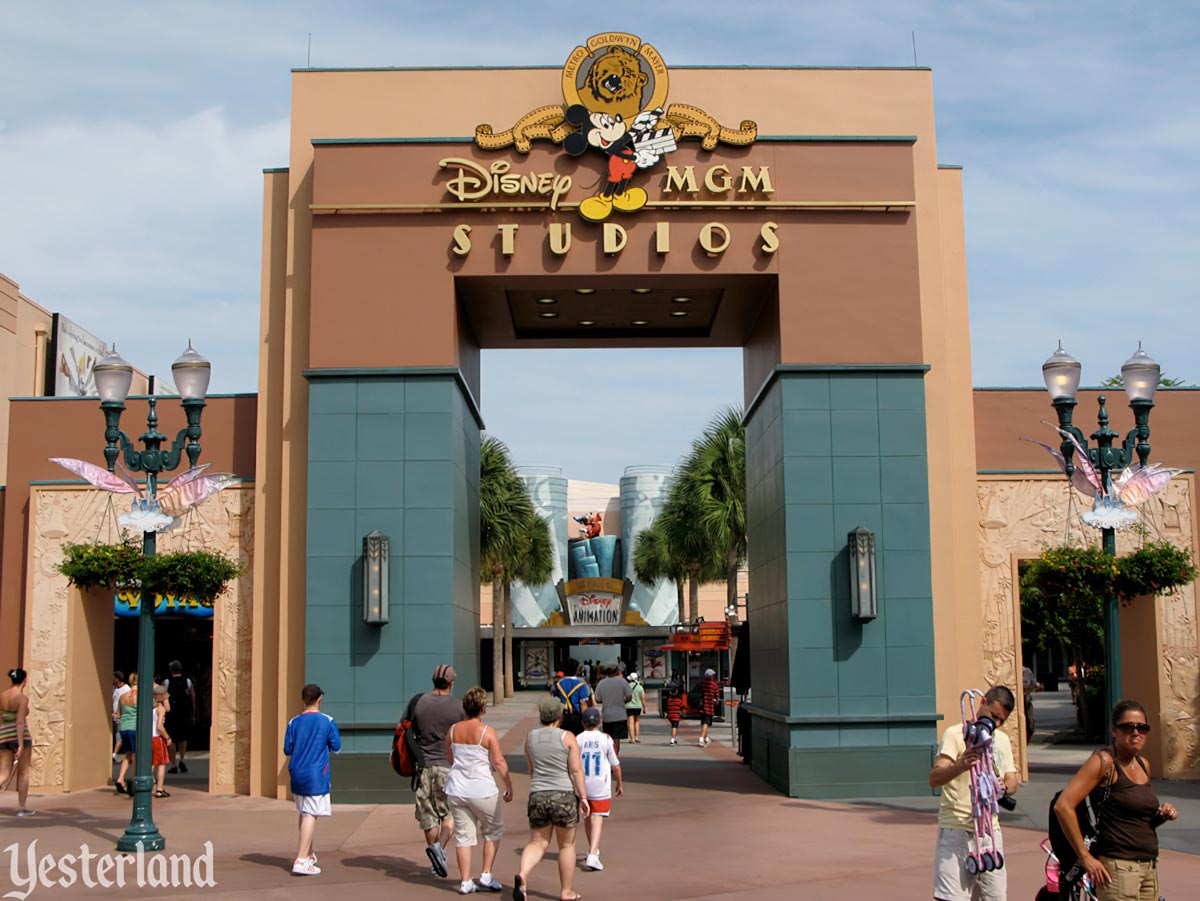
Photo by Werner Weiss, 2007 Animation Courtyard Gate at Disney-MGM Studios |
|||
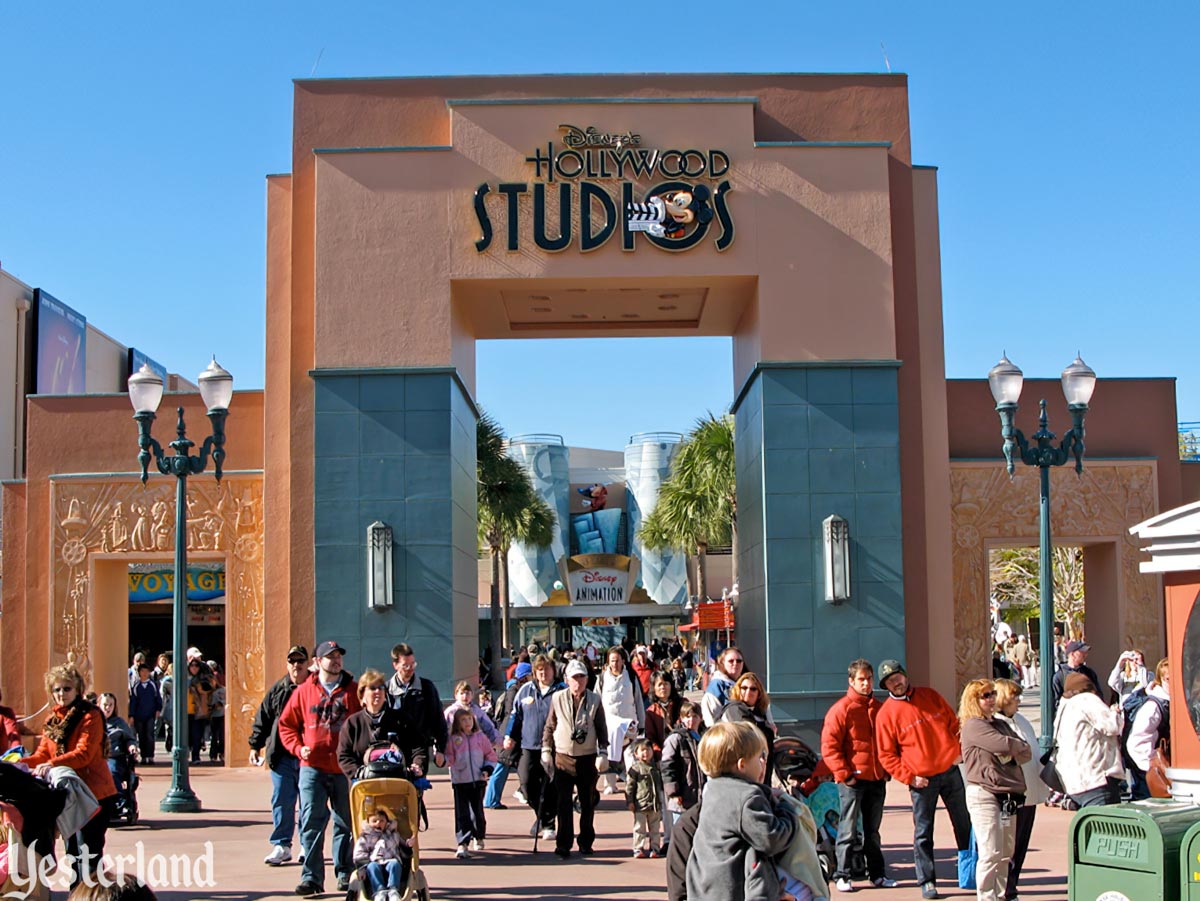
Photo by Werner Weiss, 2009 Animation Courtyard Gate at Disney’s Hollywood Studios |
|||
|
If Disney had perpetual rights, as Eisner indicated, why did Disney finally change the name of the park? For at least a decade, rumors on the Internet had claimed that the contract between Disney and MGM was about to end, and that Disney had no choice but to rename the park and remove all MGM content. As evidence, people pointed out that Disney’s promotional VHS tapes for Walt Disney World called the park Disney Studios instead of Disney-MGM Studios. The name on the tapes was due to a licensing limitation dealing with content distribution, not with an imminent name change at the park. It remained Disney-MGM Studios. |
|||
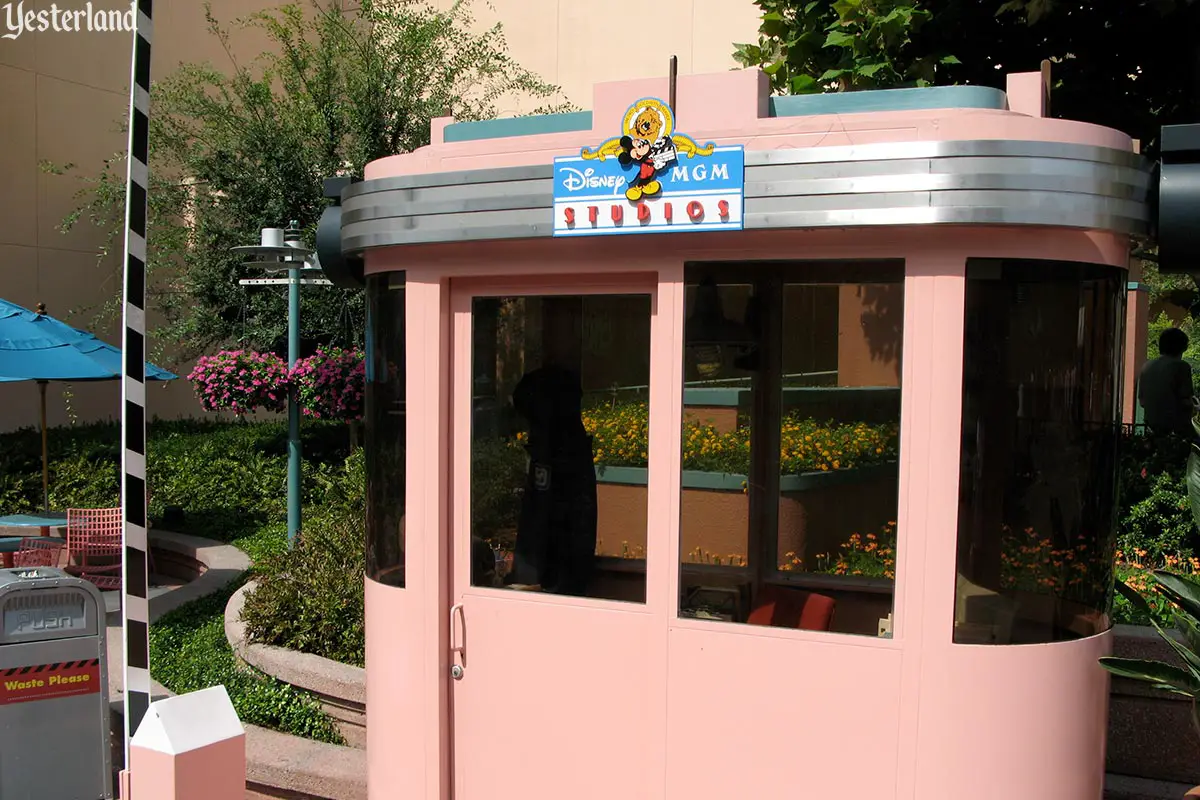
Photo by Werner Weiss, 2007 Guard booth (but not a real one) at Disney-MGM Studios |
|||
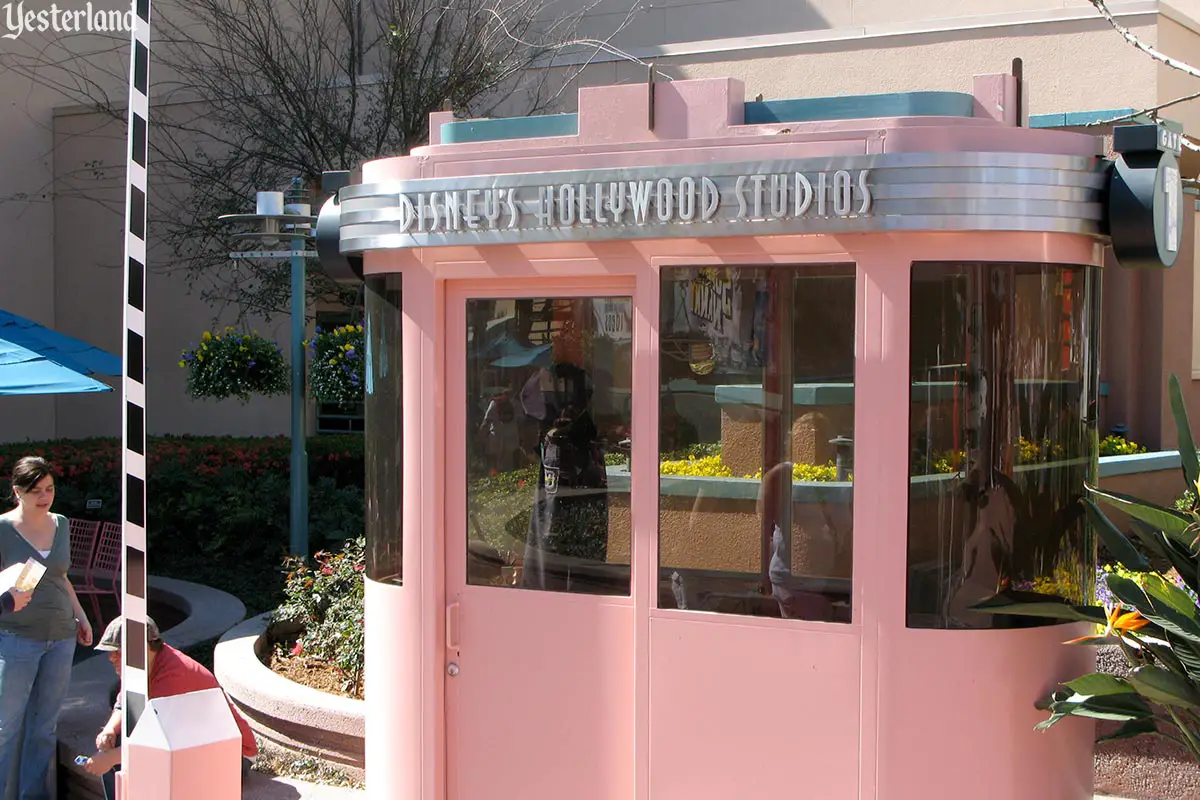
Photo by Werner Weiss, 2008 Guard booth (but not a real one) at Disney’s Hollywood Studios |
|||
|
But the rights weren’t perpetual after all. The 1991 book The Disney Touch by Ron Grover identified the length of the agreement as 20 years in the following paragraph: The negotiations took about a month. In the end, Disney all but walked away with Leo the Lion’s mane. Disney received almost free rein in use of the famous roaring lion and the treasure trove of old MGM movies. Most important, it got those rights for virtually nothing. Under the 20-year agreement, Disney was to pay only $100,000 a year for the first three years and $250,000 for the fourth year. The annual fee would increase by $50,000 in every year thereafter, with an eventual cap of $1 million for the yearly fee. Disney also got nearly unfettered ability to build other studio tours, for each of which it would pay half the fee agreed upon for the Orlando park. A 20-year contract signed in June 1985 would have ended in June 2005. (It seems odd that Disney would base a permanent theme park’s name, image, and long-term marketing on a relatively short-term licensing agreement.) Of course, the agreement could have gone on perpetually if Disney and MGM had found it mutually beneficial to keep renewing their agreement whenever the end of the term neared. Disney was able to use the MGM name through the end of 2007 and into a transition period in early 2008. |
|||
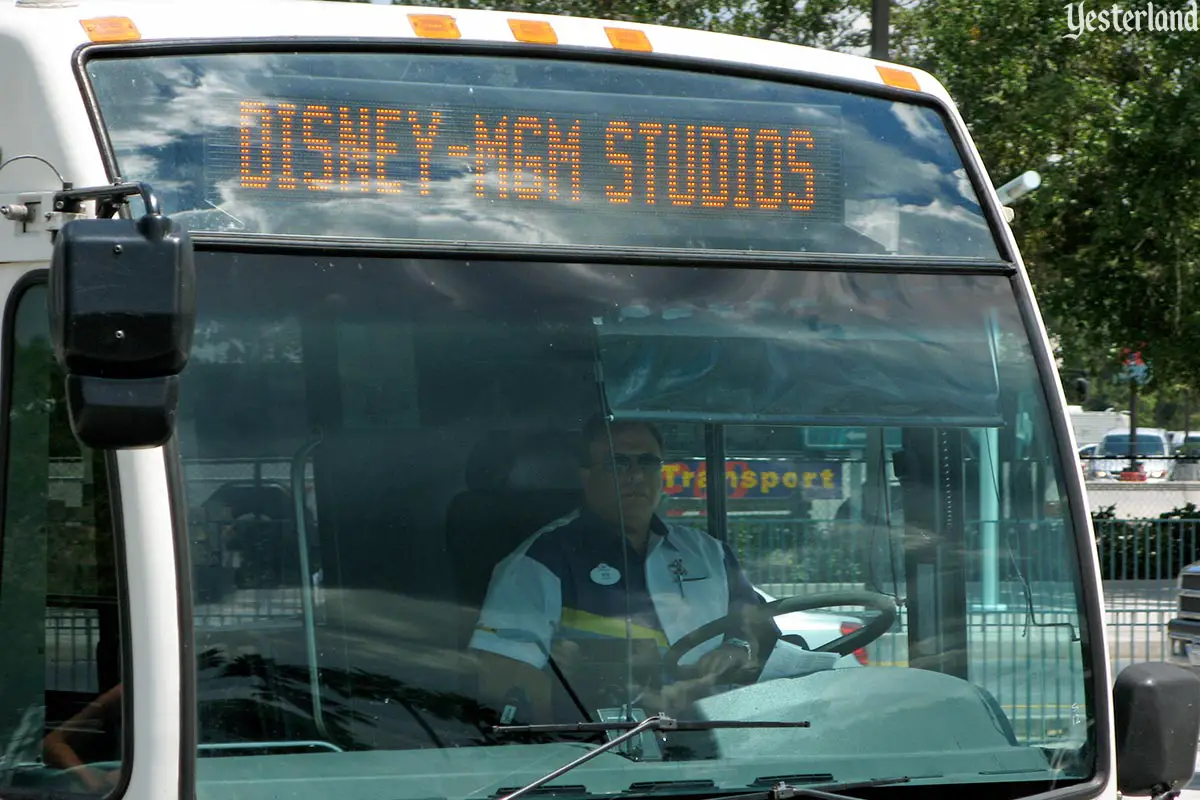
Photo by Werner Weiss, 2007 WDW bus destination, Disney-MGM Studios |
|||
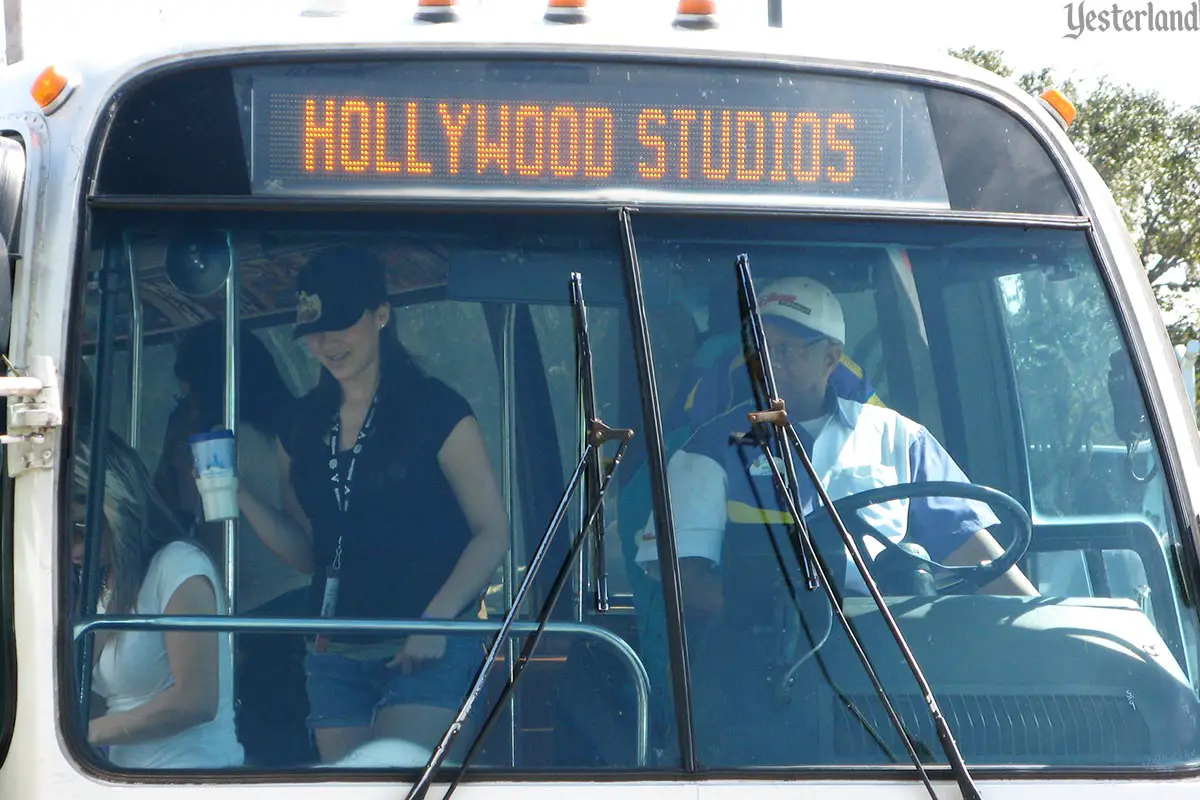
Photo by Werner Weiss, 2008 WDW bus destination, Disney’s Hollywood Studios |
|||
|
In August 2007, a Disney press release announced that Disney-MGM Studios would have a new name in January 2008. There was even an official reason: “The new name reflects how the park has grown from representing the golden age of movies to a celebration of the new entertainment that today’s Hollywood has to offer—in music, television, movies and theater,” said Meg Crofton, president of Walt Disney World Resort. Actually, the park had never been just about the golden age of movies. Even in its first year, the park’s idealized Hollywood, which was summed up as “the Hollywood that never was and always will be,” included television, the latest animation, relatively recent George Lucas movies, and actual film production. |
|||
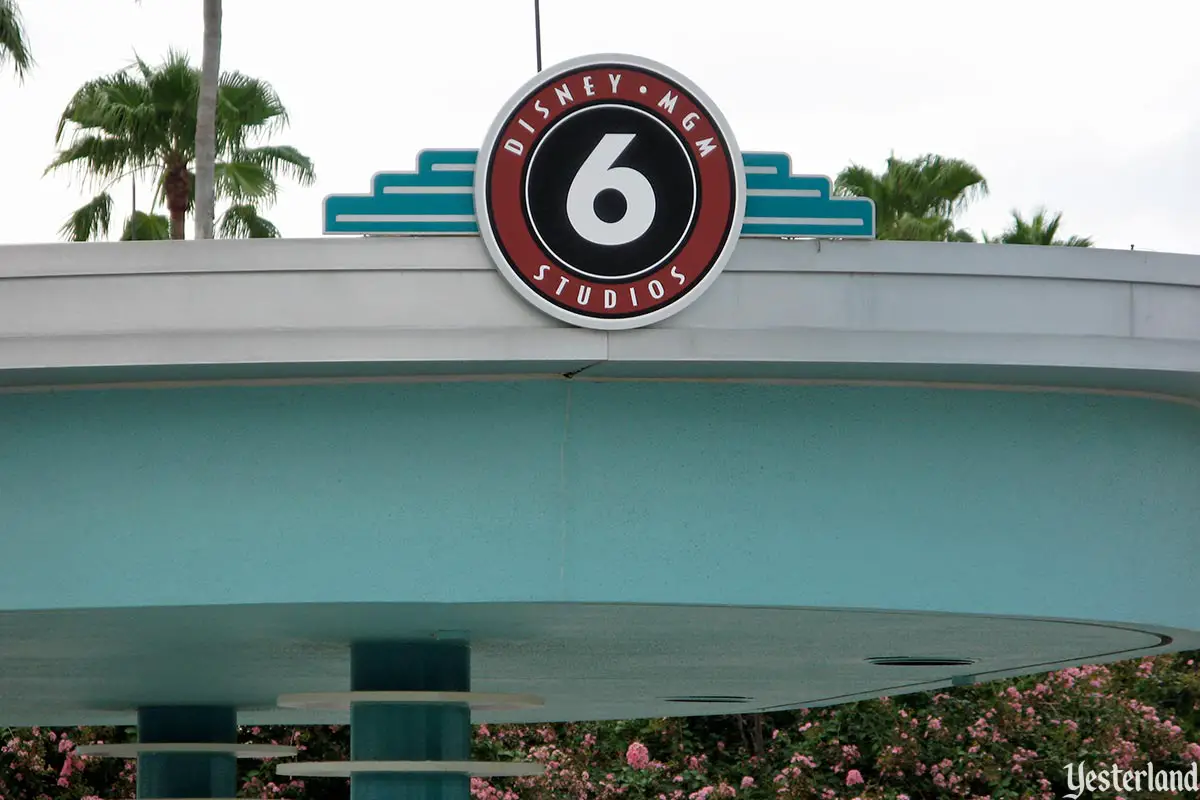
Photo by Werner Weiss, 2007 Bus stop 6 outside Disney-MGM Studios |
|||
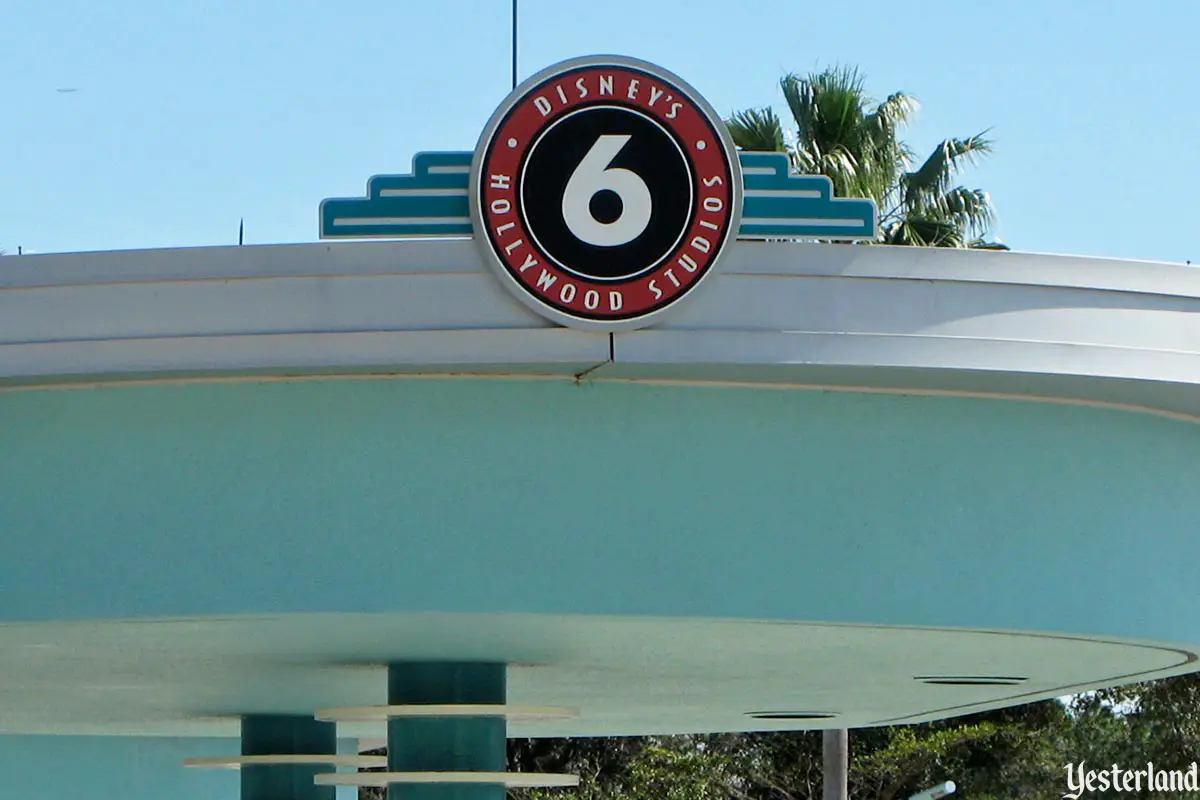
Photo by Werner Weiss, 2008 Bus stop 6 outside Disney’s Hollywood Studios |
|||
|
It doesn’t matter if MGM refused to renew or if Disney simply decided that using the MGM name was no longer good marketing. The Walt Disney Company in 2008 was a very different company than it was in 1985. Originally, the MGM name might have given a studio theme park more credibility than Disney alone possessed. But a decade later, Disney had become a media giant in film, broadcasting, cable, and home video. Why still publicize Metro-Goldwyn-Mayer, which had become even more of a shadow of its legendary past? The new name of the park surprised Disney fans on the Internet. The online community had expected Disney-PIXAR Studios or Disney-ABC Studios or maybe even Disney-PIXAR-ABC-ESPN-Muppets-go.com Studios—but not Disney’s Hollywood Studios. But it made a lot of sense. If “MGM” was synonymous with the movies, there’s one other name that has an even a greater connection to the movies—and that’s “Hollywood.” |
|||
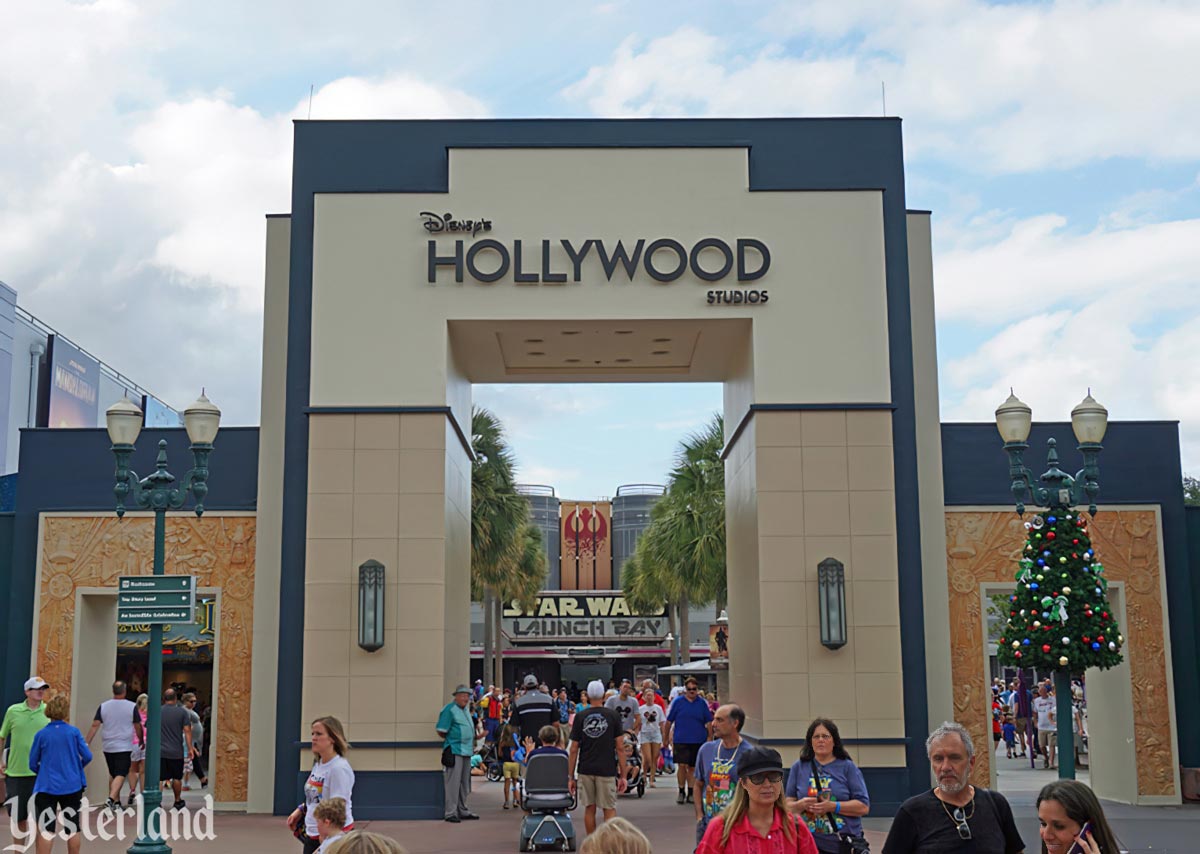
Photo by Werner Weiss, 2019 Animation Courtyard Gate at Disney’s Hollywood Studios, updated November 2019 |
|||
|
During the 30th Anniversary Celebration at Disney’s Hollywood Studios on May 1, 2019, the company revealed a new logo for the park. The name would remain the same, but Hollywood would become big and Studios would become little. The conceit that park guests are at a place that makes movies has become a thing of the past. The park is now about stepping into the movies—Disney, Pixar, and Lucasfilm movies… but not MGM movies. |
|||
|
|
Click here to post comments at MiceChat about this article.
© 2023 Werner Weiss — Disclaimers, Copyright, and Trademarks Updated January 6, 2023 | ||
